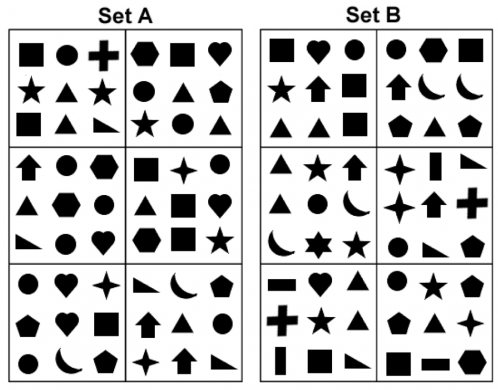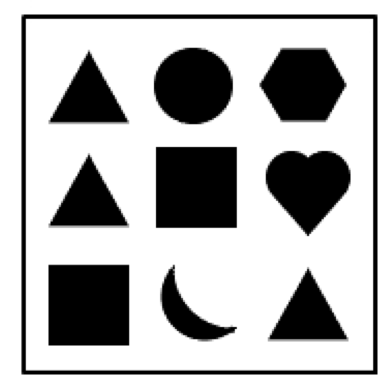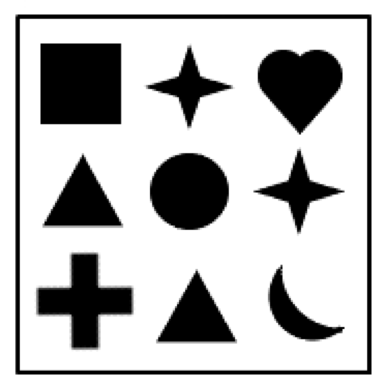Your Time has Finished
Which UCAT Exam
are you sitting?
Loading...
AR Position Patterns
Your Score:
Average Score of All Users:
You performed better than of students
Section Breakdown
| Your Score | Average of all Users | Percentile | |
|---|---|---|---|
| Position Patterns |
Position Patterns
Your score:
Average score:
You performed better than of students
Abstract Reasoning Practice Subtest Instructions
There are 4 different question types in this section of the exam.
For type 1, you will be presented with two sets of shapes labelled “Set A” and “Set B”. You will be given a test shape and asked to decide whether the test shape belongs to Set A, Set B, or Neither.
For type 2, you will be presented with a series of shapes. You will be asked to select the next shape in series.
For type 3, you will be presented with a statement, involving a group of shapes. You will be asked to determine which shape completes the statement.
For type 4, you will be presented with two sets of shapes labelled “Set A” and “Set B”. You will be asked to select which of the four response options belongs to Set A or Set B.
It is in your best interest to answer all questions as there is no penalty for guessing. All unanswered questions will be scored as incorrect.
Click the Next (N) button to proceed.


Explanation
Set A – The hexagon in the top-right has the most sides.
Pattern: In Set A, the element with the most sides is situated in a corner; in Set B, the element with the most sides is situated on an edge.
Method: It should go without saying that Orientation, Colour and Size, and also simple Number, are unlikely to be relevant to the pattern. This leaves Position and Shape/Number. As it happens, the pattern concerns the position of shapes with a particular number of sides. The best way to spot this pattern is by focussing on the unusual shapes first – for instance, the cross only appears once, in a corner, in Set A, but twice, along an edge, in Set B. That said, the Sets are littered with red-herrings. Learning the hierarchy of these shapes by number of sides will help you spot similar patterns in the future.


Explanation
Set A – The cross in the bottom-left has the most sides.
Pattern: In Set A, the element with the most sides is situated in a corner; in Set B, the element with the most sides is situated on an edge.
Method: It should go without saying that Orientation, Colour and Size, and also simple Number, are unlikely to be relevant to the pattern. This leaves Position and Shape/Number. As it happens, the pattern concerns the position of shapes with a particular number of sides. The best way to spot this pattern is by focussing on the unusual shapes first – for instance, the cross only appears once, in a corner, in Set A, but twice, along an edge, in Set B. That said, the Sets are littered with red-herrings. Learning the hierarchy of these shapes by number of sides will help you spot similar patterns in the future.
Sat, 18 Sep 2021 20:32:45
That's not true for set A middle right element?
Mon, 20 Sep 2021 05:45:27
It is correct though the shape in the corner has the most sides (the star)
Wed, 22 Sep 2021 09:57:41
trash pattern